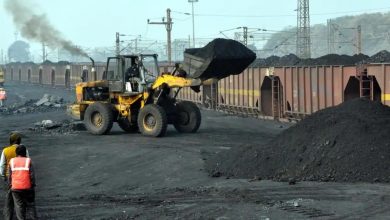100 Miners A Day Face Job Loss As Industry Winds Down Coal
The vast majority of these workers are in Asia (2.2 million jobs)
Close to 100 coal mining jobs will be lost per day until 2035 as existing coal mines reach their end. Followed by China, India could be among the countries which, by 2050, will take the hardest hit in terms of losing coal mine jobs. According to a recent report by Global Energy Monitor(GEM) on Coal Jobs.
Coal mining jobs have an outsize role in remote coal regions where they are anchors of economic activity and sustain ancillary workforces and employment in local consumer and information economies.
The vast majority of these workers are in Asia (2.2 million jobs), with China and India expected to bear the brunt of coal mine closures. China has more than 1.5 million coal miners who produce over 85% of its coal, which accounts for half of the world’s output. The northern provinces of Shanxi, Henan and Inner Mongolia mine over one-quarter of the world’s coal and employ 32% of the global mining workforce — approximately 870,400 people.
Key points from the report –
● Nearly half a million workers (414,200) operate mines that may reach their end of operation before 2035, affecting on average 100 workers per day.
● By 2050, nearly 1 million coal mine jobs (990,200) will no longer exist at operating mines given the coal industry’s foreseeable closures, potentially laying off over one-third (37%) of the existing workforce – even without climate pledges or policies to phase out coal.
● China and India will likely be hardest hit: China’s Shanxi province would shed the most jobs globally — nearly a quarter of a million (241,900) by 2050 — while Coal India is the producer facing the largest potential jobs cuts of 73,800 by mid-century. Followed by China, India could be among the countries which, by 2050, will take the hardest hit in terms of losing coal mine jobs. Coal miners face the harsh prospect of job layoffs due to scheduled mine closures and a market shift toward cheaper wind and solar power generation, whether or not their home country has a coal phase-out policy in place. An average of 100 workers per day face potential unemployment by 2035, finds a new report from Global Energy Monitor.
Sandeep Pai, Director, Swaniti said that-“This kind of work is very crucial for understanding the social-economic implications of energy transition. Specifically, this level of data would go a long way in shaping just transition policies for fossil fuel workers around the world. For example, this kind of baseline data could help estimate the scale of job creation required for transitioning workers in the fossil fuel industry.”
Data from the Global Coal Mine Tracker provide a first-of-its-kind look into employment at 4,300 active and proposed coal mines and projects around the world that are cumulatively responsible for more than 90% of global coal production.
To estimate potential job losses, the Global Coal Mine Tracker records an operation’s reported “life of mine” — that is, how long coal companies intend to extract coal at the site under existing leases, permits, available reserves, and other economic considerations. This dataset captures nearly 2.7 million coal miners directly employed at the world’s operating coal mines and finds that the coal industry is expected to shed nearly half a million jobs in the mining sector by 2035, affecting on average 100 workers per day, underlining the urgency of action to prevent widespread social and economic strife.
This report by the Global Energy Monitor emphasises that by 2050 nearly a million coal mine jobs (990,200) will no longer exist at operating mines. Of these, Coal India may face potential layoffs of about 73,800 jobs.
Coal India officially employs about 337,400 people even as studies suggest there are four informal employees for every direct employee in India’s coal mining sector. This means India, which is yet to decide on the peak coal year and is continuing to increase coal production to ensure energy security, will need to pursue energy transition policies to absorb the shock and re-engage such workers elsewhere.
However, what is helping a country like India is that its renewable energy industry is adding jobs every year. According to IRENA’s report released at the end of September 2023, India has about 988,000 RE jobs in 2022. Of those, in fiscal year 2022 alone, India’s RE industry (solar and wind) added about 105,400 jobs. Going ahead, with India pursuing aggressive RE capacity installation, the jobs in RE (installation, operation and maintenance) are only going to increase. These jobs, however, may not be in the same geographies where coal mine jobs will be lost and thus comprehensive energy transition policies are needed.
According to Prof. Runa Sarkar, Professor, Indian Institute of Management – The report by the Global Energy Monitor taking stock of the impact that a coal phase out will have on the global coal industry with respect to coal miners is a wakeup call to the enormity of the problem at hand. Ii identifies that India could stand to lose over 60,000 miners in the next two decades as coal mines close down, with Coal India being the largest loser, with 73,800 jobs at risk till 2050. The coal mining region most affected by mine closure is West Bengal in India. Further, for every worker affected in the formal economy, at least four others are affected in the informal sector. India, however, has yet to commit to a peaking year for coal production, and at present, coal production is on the rise, with talks of reopening some closed mines to meet current demand. It is important to recognise that in the normal course of things a push towards efficiency in production would lead to process automation and a concomitant loss of jobs (see Figure 6 of the report). At the same time, in October, 2022, the Indian government has issued fresh guidelines on mine closure taking into account its associated ecological and socioeconomic complexities. There is a lot of work around building a circular economy around coal which recognises that a coal mining township soon becomes about much more than about coal itself. Finally, one must take into account that areas which are rich in coal are not the ones where the sun shines or wind blows in abundance, which in turn implies a widening of regional imbalances as a result of mine closures. All this necessitates a more broad-based bottom up discussion around energy transition to ensure one which is both regionally balanced, sustainable and just.
The writer of this article is Dr. Seema Javed, an environmentalist & a communications professional in the field of climate and energy




